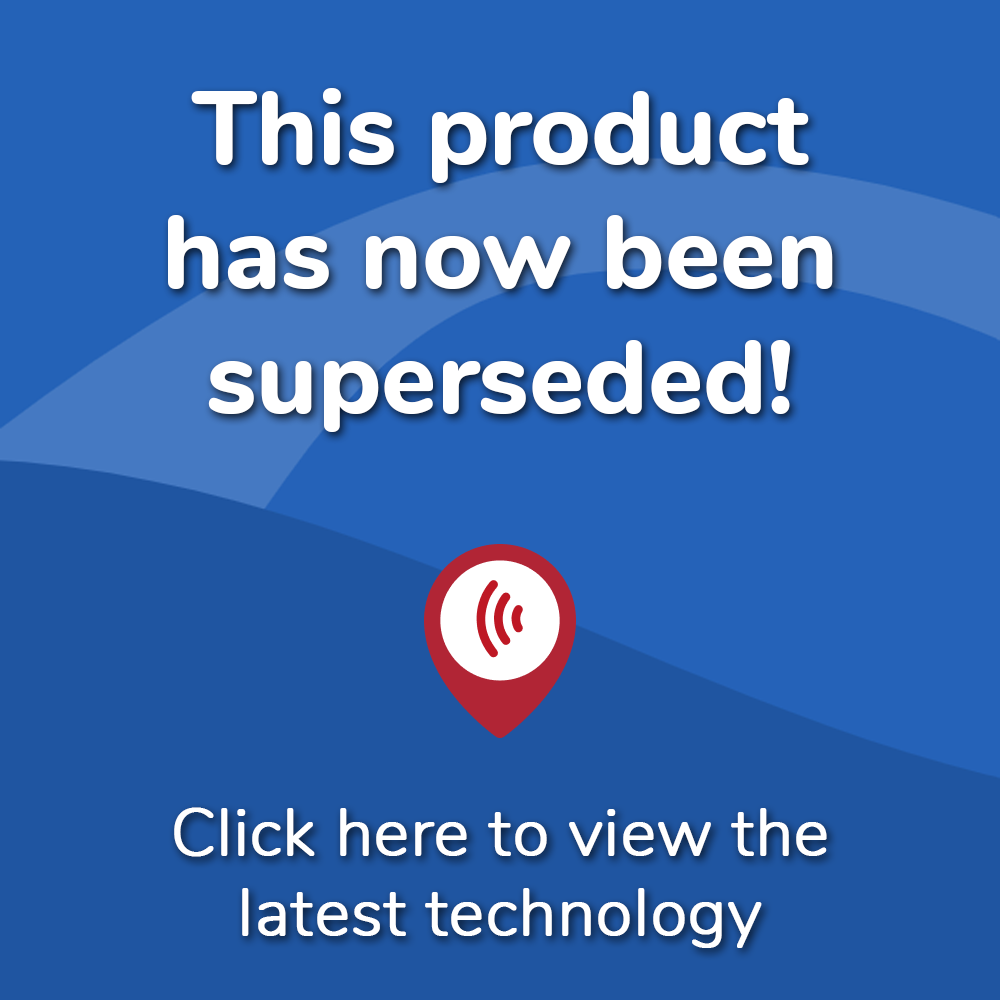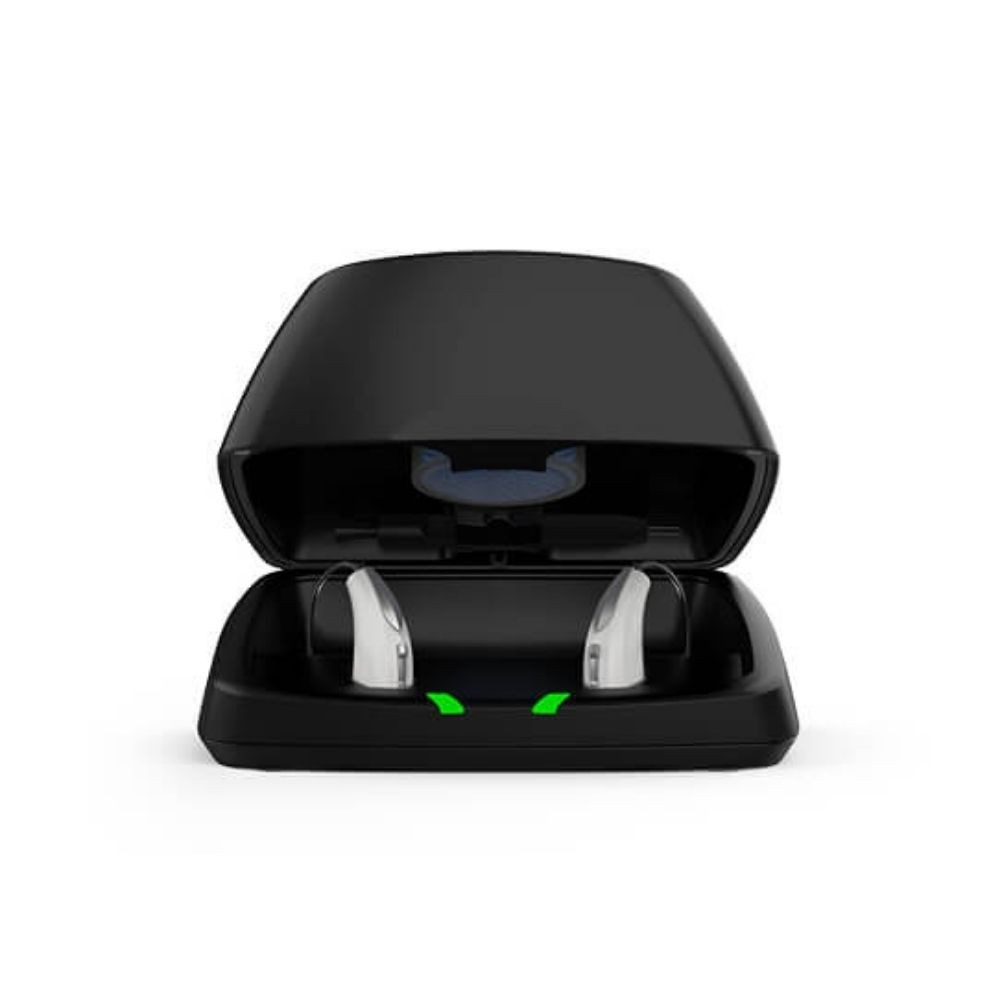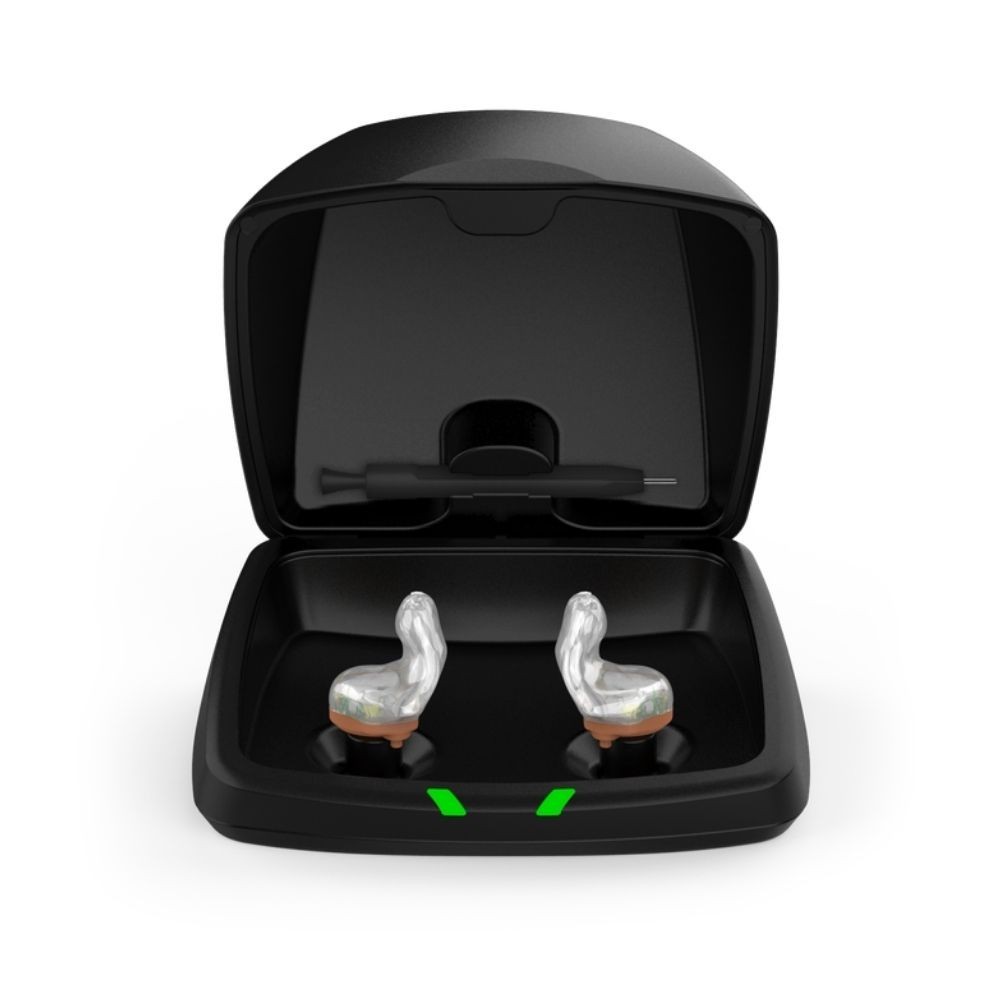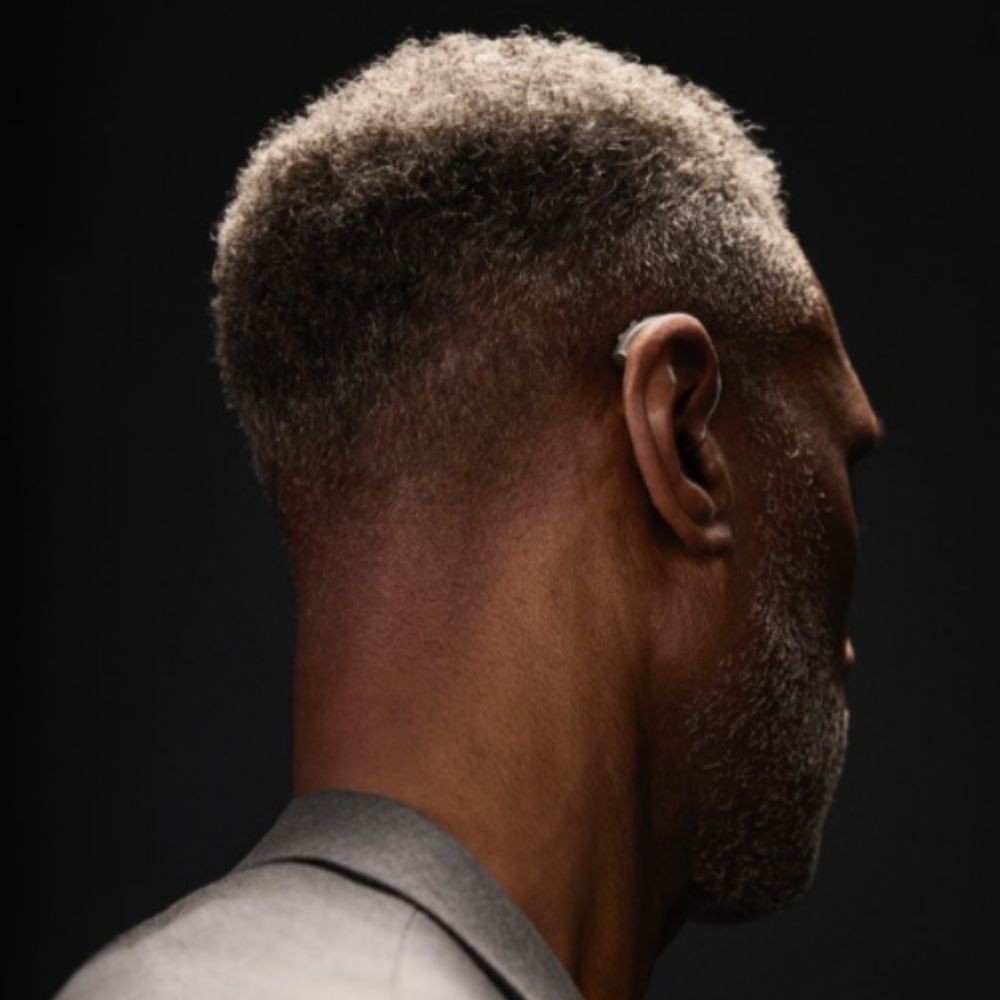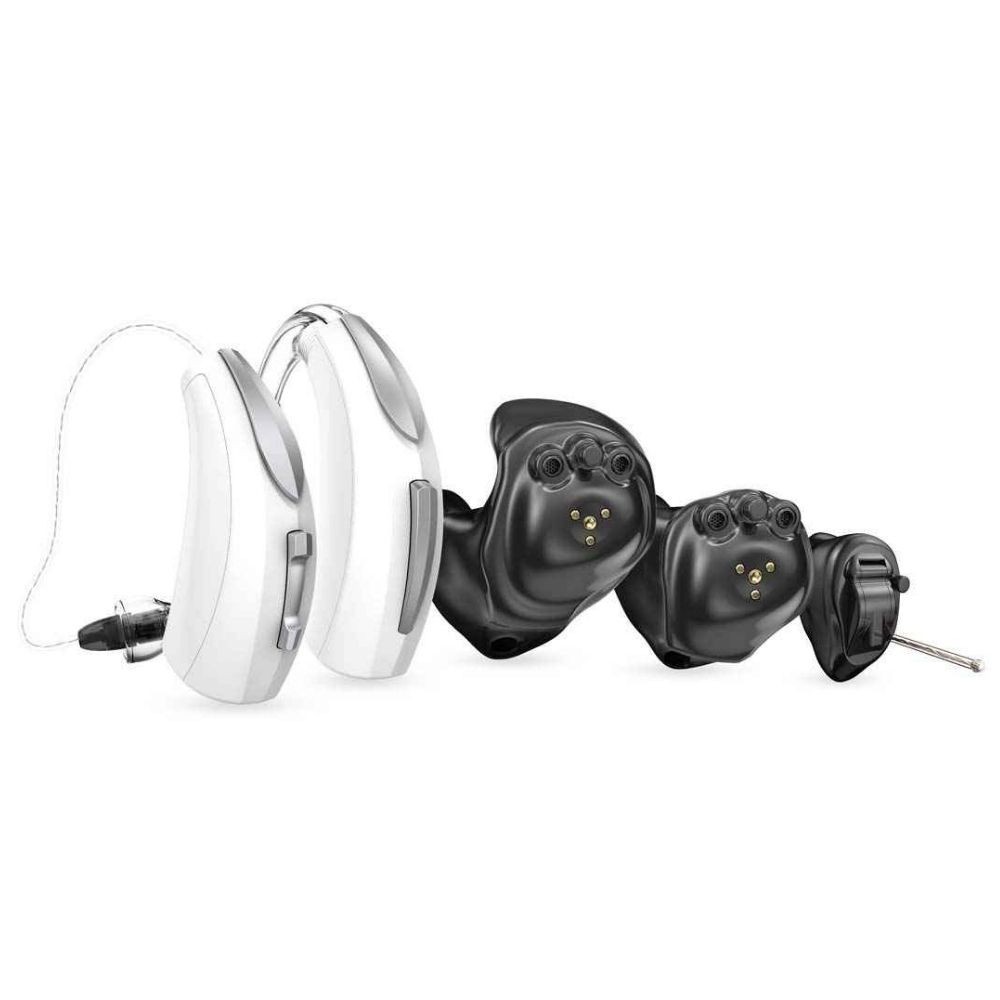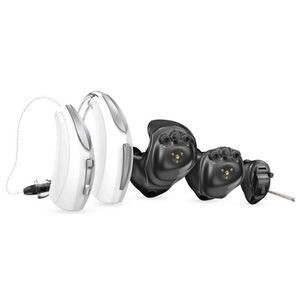WARNING Superseded Product Newer Starkey Models Available

What's included in our hearing aid prices?
Details & Features
Starkey Evolv AI 2400 Hearing Aids Overview
2024 Update: These hearing aids are now superseded with newer technology, discover the latest Starkey hearing aids here
September 2023 Update: Starkey introduced the much anticipated wireless CIC and power BTE to the Evolv AI hearing aid range.
An introduction to Starkey Evolv AI 2400 hearing aids
The Starkey Evolv AI hearing aid range launched towards the end of January 2022 and superseded the Livio AI hearing aid range. Comprising innovative hearing technology, connectivity, and personalisation - these hearing aids are created to adapt to your needs and lifestyle.
However, the main goal here for Starkey Evolv AI hearing aids was to start a completely new hearing ecosystem that focuses on both hearing loss' impact on our general health and wellness, whilst combating hearing challenges for a better user and listening experience. This is something Starkey has said they will keep on redefining in the years to come.
This evolved innovative philosophy of this new platform also comes hand in hand with the introduction of the market's smallest CIC (with 2.4 GHz). So along with their most powerful BTE Power Plus model - the Starkey Evolv AI hearing aid range offers a complete family of devices that caters to mild to severe hearing loss.
Now there is more freedom, as you can choose from five performance levels and styles of devices - whether you want the discretion of an IIC, wireless CIC or the power boost you need with their power BTE. This range also includes rechargeable RIC, CIC, IIC, and custom In Ear form factors.
►Click here to view the full Starkey Evolv AI hearing aid range
►Click here to read our Starkey Evolv AI hearing aid review
Starkey Evolv AI 2400 hearing aid models
Starkey Evolv AI In Ear hearing aid styles: IIC Non-Wireless, CIC Non-Wireless, ITC R and ITE R, and Wireless CIC.
Starkey Evolv AI Behind Ear hearing aid styles: micro RIC 312, RIC 312, RIC R, BTE R, BTE 13, and PP BTE 13.
Starkey Evolv AI 2400 hearing aid's connectivity and sound
The Starkey Evolv AI 2400 hearing aid is the top or premium technology level in this range and offers a full feature specification. This means you will benefit from more filters and programs and the most processing channels that will give you a great level of sound quality in all listening environments.
For example, you can enjoy a better listening experience at outdoor events, in busy restaurants, at live concerts, at social gatherings, and more. This Starkey Sound is based on scientific algorithms that are modelled by your brain's auditory system - giving you optimum sound.
But, what does this actually mean? How can it help you and your hearing? Your brain naturally tries to suppress background noise and increase speech automatically. Because Evolv AI mirrors this with the intelligence of machine learning (a very smart artificial intelligence technology) - you gain from a high-quality filtered sound experience.
This hearing aid launch also offers you Starkey's most advanced connectivity to date with better connection, improved Android connectivity to allow for greater sound, better audio streaming, and the freedom to explore their hearing aid accessories range.
With Starkey Evolv AI 2400 hearing aids you can look forward to:
- 2-Way audio.
- Health monitoring.
- Around 40% noise reduction when compared to Starkey’s previous technology - Livio AI.
- A more refined and improved Edge Mode.
- Both Fall Alert and Voice Reminders are now available in all performance levels, so everyone can benefit from these handy features.
- A better Thrive app with more enhancements to tap into that will personsalise your sound even more.
- The introduction of TeleHear. More on this below.
Starkey Evolv AI 2400 hearing aids main features
Starkey Evolv AI Hearing Performance
- Starkey Sound: With around 55 million adjustments per hour, the Starkey Evolv AI hearing aid provides automatic, realistic, and great sound in all environments.
- 2-Way Audio (New for Evolv AI): Evolv AI's microphones pick up and stream voices directly to your iPhone and iPad devices - giving you true hands-free convenience. Currently not available with Android mobiles or devices.
- Edge Mode: With this feature, you can simply hear better in those challenging environments using the AI technology within the Thrive app.
- Voice AI: Using AI technology, this speech-enhancing feature uses your iPhone to provide an unprecedented hearing experience. Ideal for those with moderate hearing loss of around 50 db HL or greater.
- Personalised Memories: Create various bespoke memories or 'geo tag' your common environments like 'home' and 'coffee shop'. So when you are in a similar environment, your hearing aids can adjust automatically to give you the best listening experience.
- MultiFlex Tinnitus Technology: Use Tinnitus support features to relieve symptoms and spikes in your tinnitus on the go.
Starkey Evolv AI Healthable Technology
- Activity Tracking: You can record your steps taken, track movements and monitor your daily activities and exercise. Keeping you moving and stimulated.
- Engagement Tracking: When you are actively listening these feature monitors and records the health benefits of wearing your hearing aids.
- Fall Detector: Recognises when you have fallen and sends a message to a designated person of the accident along with a GPS signal. Giving peace of mind to your loved ones and giving you the help you need in real-time.
Starkey Evolv AI Hearing Aid Assistant
- TeleHealth: This remote programming feature enables you to have the freedom to adjust on the go. You can also contact your audiologist to assist in remote adjustments when needed from the comfort of your own home.
- Find My Phone: Simply assists in locating your missing phone with GPS location and timestamp.
- Tap Control: Tap twice to activate Edge Mode, Thrive Assistant or to start/stop/pause streaming audio. A quick and handy feature on the go.
- Self Check: Offers a brief rundown of the performance of your device, like battery power. So you keep your hearing aids in optimum condition and the confidence you need knowing you will not run out of the power you need.
- Thrive Assistant: Enables you to get fast answers to common questions whenever you want and wherever you are.
- Translate: Helps you communicate better with others who speak a different language. Ideal if you travel a lot or need help with a language on business trips.
- Reminders: Offers schedule alerts and reminders for daily tasks, like taking medication - your very own PA!
- Transcribe: This is a feature that enables verbal communication to be converted into text that can be then shared or saved. Helpful to refer to afterward and to break down speech in challenging listening environments.
- Apps: These hearing aids are both Thrive app & Thrive Care app compatible, so you have full access to personalise the sound you want to hear.
►Click here to go to the top of the page
Want to know more about Starkey Evolv AI 2400 hearing aids?
Wondering what our experts think about this hearing aid range? View our summary of the Starkey Evolv AI hearing aids on the range page here
Alternatively, you can call us free on 0800 567 7621 to chat about these digital hearing aids, what they can do for your hearing loss, and whether they are the right hearing aids for you with one of our experts.
Other Starkey Evolv AI hearing aid technology levels:
►Click here to view Starkey Evolv AI 2000 hearing aids
►Click here to view Starkey Evolv AI 1600 hearing aids
►Click here to view Starkey Evolv AI 1200 hearing aids
►Click here to view Starkey Evolv AI 1000 hearing aids
**Please note, there will be an additional surcharge of £125 if we are pairing a single hearing aid with an existing aid bought from another company where we are taking over the aftercare responsibilities and looking after both hearing aids**
Paul Harrison is an audiology expert at Hearing Aid UK, with over 20 years of audiology experience and a member of the British Society of Hearing Aid Audiologists Council (BSHAA) between 2015 - 2020.
Explore Starkey Evolv AI 2400 hearing aid prices, video and brochure below
Watch the Starkey Evolv AI 2400 Hearing Aids Video Below
Have any questions?
Here, at Hearing Aid UK, we offer a wide range of hearing aids available on the market - keeping up to date with the best and latest hearing aid technology.
We can support your hearing healthcare in clinic or in the comfort of your own home and with nationwide coverage, we will have an audiologist near you.
Whatever your hearing loss level, budget, or style our audiologists can help you find the perfect hearing solution for you.
Call us free for support and advice on 0800 567 7621
Starkey Evolv AI 2400 Hearing Aids Information
Click on the buttons below to discover moreOur specialist service includes:
Do not spend hundreds of pounds without getting a second opinion from us.
Please call us on 0800 567 7621
 Not only are the prices great, but the service is fantastic! Many thanks to your team.
Not only are the prices great, but the service is fantastic! Many thanks to your team.Other pages you might find useful
What's included in our hearing aid prices?
If you are looking at this page then it is likely that an audiologist has suggested that you purchase this particular hearing aid, so is this the best model for you?
In general, any audiologist will always recommend to you the model that best suits your needs. Here is a useful checklist to make sure that is the case.
- Audiologist level of knowledge: The audiologist you have seen will hopefully have a wide knowledge of all available hearing aids, however, some will only be familiar with a small number of brands and therefore may not really be in a position to know which model is the best for you. It is OK to challenge their recommendation and ask them to justify why this particular brand is the one for you.
- Do research: Read about the hearing aid that was recommended. Does it seem like it will suit your lifestyle? Does it have more or fewer features than you need?
- Be aware of sales targets: Many high street retailers have specific tie-ins to a particular manufacturer/brand. The hearing aid they have suggested may still be the correct one for you, but do your research so that you know why they might have recommended it.
If in doubt, feel free to give us a call. That's what we're here for. In the meantime, read all about our review of the best hearing aids for 2025 here
If you have significant hearing loss in both ears, you should be wearing two hearing aids. Here are the audiological reasons why:
Localisation: The brain decodes information from both ears and compares and contrasts them. By analysing the minuscule time delays as well as the difference in the loudness of each sound reaching the ears, the person is able to accurately locate a sound source. Simply put, if you have better hearing on one side than the other, you can't accurately tell what direction sounds are coming from.
Less amplification is required: A phenomenon known as “binaural summation” means that the hearing aids can be set at a lower and more natural volume setting than if you wore only one hearing aid.
Head shadow effect: High frequencies, the part of your hearing that gives clarity and meaning to speech sounds, cannot bend around your head. Only low frequencies can. Therefore if someone is talking on your unaided side you are likely to hear that they are speaking, but be unable to tell what they have said.
Noise reduction: The brain has its own built-in noise reduction which is only really effective when it is receiving information from both ears. If only one ear is aided, even with the best hearing aid in the world, it will be difficult for you to hear in background noise as your brain is trying to retain all of the sounds (including background noise) rather than filtering it out.
Sound quality: We are designed to hear in stereo. Only hearing from one side sounds a lot less natural to us.
Fancy some further reading on this topic? You can read about why two hearing aids are better than one in our article, hearing aids for both ears, here
For most people, the main benefit of a rechargeable hearing aid is simple convenience. We are used to plugging in our phones and other devices overnight for them to charge up. Here are some other pros and cons:
For anybody with poor dexterity or issues with their fingers, having a rechargeable aid makes a huge difference as normal hearing aid batteries are quite small and some people find them fiddly to change.
One downside is that if you forget to charge your hearing aid, then it is a problem that can't be instantly fixed. For most a 30-minute charge will get you at least two or three hours of hearing, but if you are the type of person who is likely to forget to plug them in regularly then you're probably better off with standard batteries.
Rechargeable aids are also a little bit bigger and are only available in Behind the Ear models.
Finally, just like with a mobile phone, the amount of charge you get on day one is not going to be the same as you get a few years down the line. Be sure to ask what the policy is with the manufacturer warranty when it comes to replacing the battery.
Looking for more information on rechargeable hearing aids? Read our dedicated page on the topic here
For most people, the answer is yes. But it's never that simple.
The majority of hearing problems affect the high frequencies a lot more than the low ones. Therefore open fitting hearing aids sound a lot more natural and ones that block your ears up can make your own voice sound like you are talking with your head in a bucket. Therefore in-ear aids tend to be less natural.
However the true answer is we can't tell until we have had a look in your ears to assess the size of your ear canal, and until we have tested your hearing to see which frequencies are being affected.
People with wider ear canals tend to have more flexibility, also there are open fitting modular CIC hearing aids now that do not block your ears.
There is also the age old rule to consider, that a hearing aid will not help you if it's sat in the drawer gathering dust. If the only hearing aid you would be happy wearing is one that people can't see, then that's what you should get.
Most people can adapt to any type of hearing aid, as long as they know what to expect. Have an honest conversation with your audiologist as to what your needs are.
Generally speaking, six or more. Unless it's none at all.
The number of channels a hearing aid has is often a simplistic way an audiologist will use to explain why one hearing aid is better than another, but channels are complex and it is really not that straightforward. Here are some reasons why:
Hearing aids amplify sounds of different frequencies by different amounts. Most people have lost more high frequencies than low and therefore need more amplification in the high frequencies. The range of sounds you hear are split into frequency bands or channels and the hearing aids are set to provide the right amount of hearing at each frequency level.
Less than six channels and this cannot be done with much accuracy, so six is the magic number. However, a six channel aid is typically very basic with few other features and is suitable only for hearing a single speaker in a quiet room. The number of channels is not what you should be looking at, it's more the rest of the technology that comes with them.
As a final note, different manufacturers have different approaches. One method is not necessarily better than any other. For example, some manufacturers have as many as 64 channels in their top aids. Most tend to have between 17 and 20. One manufacturer has no channels at all.
Hearing aids are easily lost, misplaced or damaged and typically are one of the most expensive personal possessions an individual can own. We offer hearing aid warranty coverage for £80 per year per aid. Find out more about this service we provide here
Other Models
Ask the Experts
6 Morton Lane
Walkwood
Redditch
Worcestershire
B97 5QA
Latest Launch
When we refer to a product as 'Latest Launch', we mean it is the latest to be released on the market.
New
When we refer to a product as 'New', we mean that the product is the newest hearing aid model on the market.
When we refer to a product as 'Superseded', we mean that there is a newer range available which replaces and improves on this product.
Older Model
When we refer to a product as an 'Older Model', we mean that it is has been superseded by at least two more recent hearing aid ranges.


